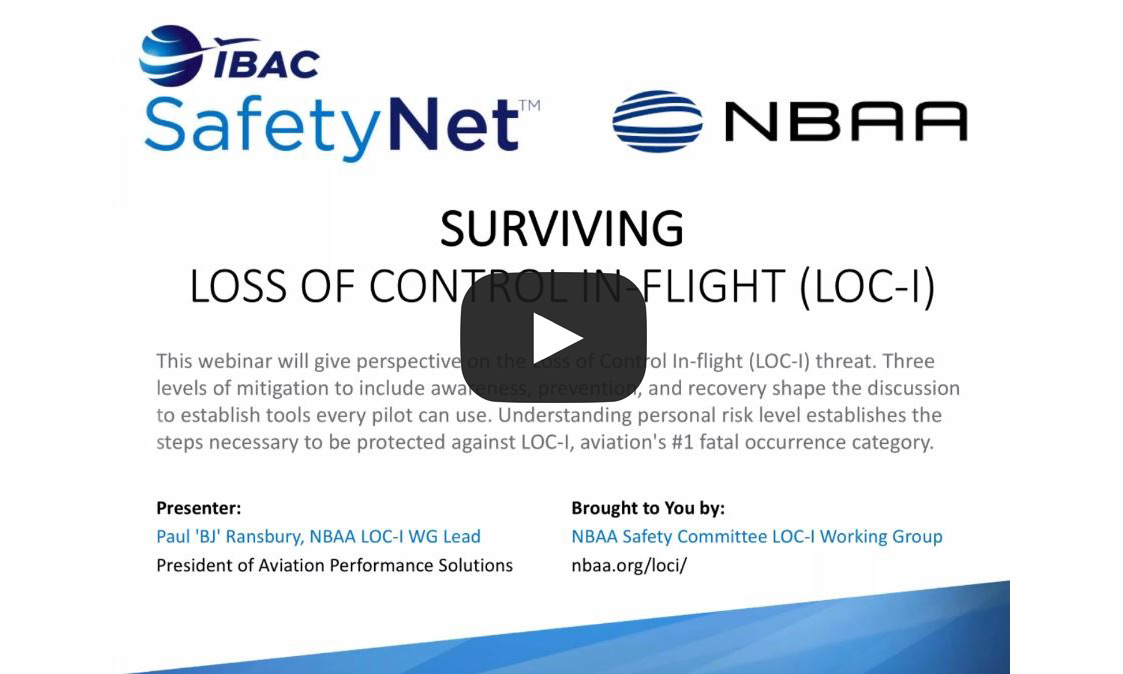Presented by IBAC SafetyNet, the “Surviving Loss of Control In-flight” webinar is brought to you by the NBAA Safety Committee Loss of Control In-flight Working Group (LOC-I WG) and features presenter Paul ‘BJ’ Ransbury, NBAA LOC-I WG Lead and President/CEO of APS.
Overview:
This webinar gives perspective on the Loss of Control In-flight (LOC-I) threat. Three levels of mitigation including awareness, prevention, and recovery shape the discussion to establish tools every pilot can use. Understanding personal risk level establishes the steps necessary to be protected against LOC-I, aviation’s #1 fatal occurrence category.
*Click on the image below to watch the full webinar (about 1 hour 23 minutes long). You will be asked to put in your name and email address to access the recording.
Further Information on Preventing LOC-I:
- Why Upset ‘Recovery’ Training Is Essential to Reducing LOC-I: Why do we need upset recovery skills if we can just learn how to avoid an upset in the first place? This article provides an explanation of why “recovery” skills enhance recognition and prevention of an aircraft upset.
- What Is LOC-I?: Read an in-depth explanation of Loss of Control In-flight and its relevance to the aviation industry.
- Channeling Adrenaline: What are the advantages of “adrenalized learning”?
- Required Intensity for Upset Training: In order to embed the skills a pilot needs to recover from an upset, training must strive to ensure those skills have become second nature. This article discusses the intensity of training required to give pilots the best chance of retaining upset prevention and recovery skills and being able to call up on them even during a highly stressful and time critical event.
- Get the Full Story: This article discusses the essential elements of Upset Prevention & Recovery Training as well as what to look for in a provider.
- LOC-I Podcast from NBAA Flight Plan: APS President/NBAA Safety Committee LOC-I Working Group Lead Paul ‘BJ’ Ransbury discusses the importance of recovery training in preventing Loss of Control In-flight. (About 5 min. long)

Comments: